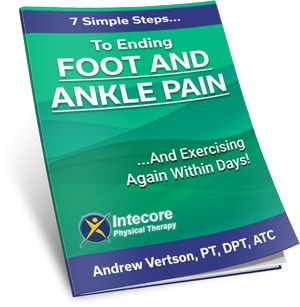
Welcome to our blog post on the top 5 common posture problems and how to fix them. In this article, we will explore the importance of maintaining good posture and provide practical tips to address common issues that many people face. Whether you spend long hours sitting at a desk or have developed bad habits over time, we’ve got you covered with effective solutions to improve your posture and enhance your overall well-being. So, let’s dive in and discover how you can achieve better posture starting today.
More Posts Like This From Intecore:
What Causes Back Spasms and How To Treat Them
Is It Safe To Exercise in Cold Weather?
How Can I Improve My Posture During Everyday Activities?
Table of Contents
Posture Problem 1: Rounded Shoulders
Rounded shoulders are one of the most common posture problems, especially when many of us spend hours hunched over computers and smartphones. This issue can lead to discomfort, pain, and even long-term musculoskeletal issues if not addressed.
Causes of rounded shoulders
- Prolonged Sitting: Spending long hours sitting, especially with poor desk ergonomics, can cause the shoulders to round forward.
- Technology Use: Constantly looking down at phones and laptops encourages a forward shoulder position.
- Weak Upper Back Muscles: Lack of strength in the upper back muscles can lead to an inability to maintain proper shoulder alignment.
- Poor Exercise Habits: Overemphasis on chest exercises, while neglecting the back, can contribute to muscle imbalances.
Exercises to correct rounded shoulders
- Shoulder Blade Squeezes: Sit or stand with your back straight. Squeeze your shoulder blades together, hold for 5 seconds, and release. Repeat 10-15 times.
- Doorway Stretch: Stand in a doorway with your arms out to the side and elbows bent at 90 degrees. Gently lean forward until you feel a stretch in the front of your shoulders. Hold for 20-30 seconds.
- Reverse Dumbbell Flys: Bend forward slightly with a dumbbell in each hand. With a slight bend in your elbows, lift the weights out to the side until they are in line with your shoulders, then lower back down. Perform 10-15 repetitions.
- Yoga Cat-Cow Stretch: On your hands and knees, alternate between arching your back up and dipping it down, focusing on moving your shoulders and upper back.
Posture Problem 2: Forward Head Posture

Forward head posture, often referred to as “text neck,” is one of the most common posture problems we see, particularly in today’s digital age. It occurs when the head is consistently positioned in front of the body, leading to neck strain and discomfort.
Causes of Forward Head Posture
- Extended Use of Devices: Constantly looking down at phones, tablets, or laptops can cause the head to lean forward.
- Poor Ergonomics at Work: Incorrect workstation setup can lead to leaning forward to see the screen better.
- Weak Neck Muscles: Lack of strength in the neck muscles makes it difficult to maintain a neutral head position.
- Bad Sitting Habits: Slouching and not using backrests push the head and neck forward.
Exercises to Correct Forward Head Posture
- Chin Tucks: Sit or stand with a straight spine. Gently draw your chin back to create a “double chin,” aligning your head directly over your torso. Hold for 5 seconds, then release. Repeat 10 times.
- Neck Stretches: Tilt your head to one side, bringing your ear towards the shoulder until a stretch is felt on the opposite side of the neck. Hold for 20-30 seconds and repeat on the other side.
- Wall Angel Exercises: Stand with your back against a wall, feet slightly forward. Press your arms against the wall with elbows bent at 90 degrees, and slide them up and down. Perform 10-15 repetitions.
- Prone Cobra Exercise: Lie face down, arms at your sides. Gently lift your chest and head off the ground, squeezing your shoulder blades together. Hold for 10 seconds, then release. Repeat 10 times.
Posture Problem 3: Hunched Back
A hunched back, also known as kyphosis, is characterized by an exaggerated forward rounding of the upper back. This common posture problems condition can lead to back pain and stiffness.
Causes of Hunched Back
- Prolonged Sitting: Spending hours in a seated position, especially with poor posture, can contribute to a hunched back.
- Age-Related Changes: As we age, spinal discs can degenerate, leading to a curvature in the upper back.
- Muscle Weakness: Weakness in the upper back muscles can result in an inability to hold the spine erect.
- Improper Lifting Techniques: Regularly lifting heavy objects incorrectly can strain the back and lead to posture issues.
Exercises to Correct Hunched Back
- Thoracic Extension: Sit on a chair, clasp your hands behind your head. Gently arch your upper back backward over the chair’s backrest. Hold for a few seconds, then return to the starting position. Repeat 10 times.
- Seated Rows: Using a resistance band, sit on the floor with your legs extended. Wrap the band around your feet and hold each end. Pull the band towards your waist, squeezing your shoulder blades together. Repeat 10-15 times.
- Pilates or Yoga: Engage in Pilates or yoga exercises that focus on strengthening the core and improving spinal alignment.
- Foam Rolling: Use a foam roller to gently roll out and stretch the muscles of the upper back.
Posture Problem 4: Swayback Posture
Swayback posture is characterized by an exaggerated inward curve in the lower back, often leading to discomfort and imbalance. This common posture problem can have significant impacts on overall body alignment.
Causes of Swayback Posture
- Muscle Imbalances: Weak abdominal muscles and tight lower back muscles contribute to this posture.
- Prolonged Sitting: Sitting for extended periods can lead to the weakening of core muscles, exacerbating swayback.
- Incorrect Training Habits: Overemphasis on certain exercises like abdominal crunches without proper lower back strengthening can cause swayback.
- Genetic Factors: In some cases, natural body structure and genetics can predispose individuals to swayback posture.
Exercises to Correct Swayback Posture
- Planks: Strengthen the core muscles without putting extra pressure on the lower back.
- Glute Bridges: Lie on your back with knees bent, lift your hips to form a straight line from knees to shoulders, focusing on engaging the glutes and hamstrings.
- Hip Flexor Stretches: Stretch the hip flexors regularly to reduce tightness that pulls the pelvis forward.
- Strengthening Lower Back: Exercises like bird-dogs and supermans can help strengthen the lower back and improve posture.
Posture Problem 5: Anterior Pelvic Tilt
An anterior pelvic tilt involves the forward rotation of the pelvis, which can lead to an exaggerated curve in the lower back and imbalance in the posture.
Causes of Anterior Pelvic Tilt
- Prolonged Sitting: Long periods of sitting can tighten hip flexors and weaken the abdominal muscles, contributing to this condition.
- Muscle Weakness and Imbalance: Weak core and gluteal muscles, coupled with tight hip flexors and lower back muscles, can lead to anterior pelvic tilt.
- Poor Exercise Form: Incorrect form during exercise, particularly in lower body workouts, can exacerbate the tilt.
- Lifestyle Factors: A sedentary lifestyle and lack of physical activity can increase the risk of developing an anterior pelvic tilt.
Exercises to Correct Anterior Pelvic Tilt
- Core Strengthening: Focus on exercises that strengthen the entire core, such as planks and leg raises.
- Hip Flexor Stretches: Perform stretches for the hip flexors daily to reduce tightness.
- Glute Strengthening: Exercises like squats, lunges, and glute bridges can help strengthen the gluteal muscles.
- Hamstring Exercises: Strengthening the hamstrings can help balance the muscles around the pelvis and reduce the tilt.
Understanding the significance of maintaining good posture is essential, especially when dealing with common posture problems. Good posture is more than just standing straight; it’s about ensuring optimal health and functionality of your body. It affects various aspects of health, from how effectively you breathe and digest to the integrity of your muscles and joints. Proper posture is also crucial in preventing chronic pain and minimizing the risk of injury.
In addressing the common posture problems outlined in this blog, it’s evident that proactive efforts to improve and maintain good posture are vital for your long-term health. Here are some final tips to avoid common posture problems:
- Mindfulness: Continuously monitor your posture throughout the day. Pay attention to how you sit, stand, and move.
- Ergonomic Setup: Create a workspace and home environment conducive to good posture. This includes having a supportive chair, positioning screens at eye level, and utilizing ergonomic accessories.
- Regular Activity: Engage in diverse physical activities to keep your body agile and strong, focusing on those that especially promote good posture, like yoga and Pilates.
- Seek Expert Advice: If you’re struggling with common posture problems, don’t hesitate to get advice from a physical therapist or a trained professional who can offer customized exercises and guidance.
- Exercise Consistency: Regularly perform the recommended exercises for your specific posture issues. Remember, consistency is the key to seeing improvements.
Improving your posture is an ongoing process that requires patience and dedication. With the right strategies you can correct common posture problems and enjoy the multitude of benefits that come with having good posture.
Ready To Seek Help With Physical Therapy?
If you need some help and want to find out if physical therapy is right for you – we’re here for you.
Simply complete this quick form and tell us about what’s going on and our team will be in touch: https://intecorept.com/inquire/ Or, gives us a call at: 949-597-2103
- 7 Ways to Get Rid of Tension Headaches Naturally - July 1, 2025
- Why Are My Feet Swollen? Common Causes Explained - June 2, 2025
- What Is Restless Leg Syndrome? Symptoms, Causes, and Relief Options - May 5, 2025













